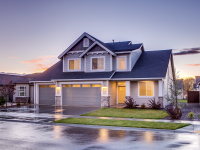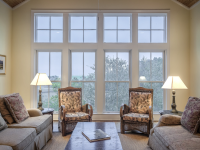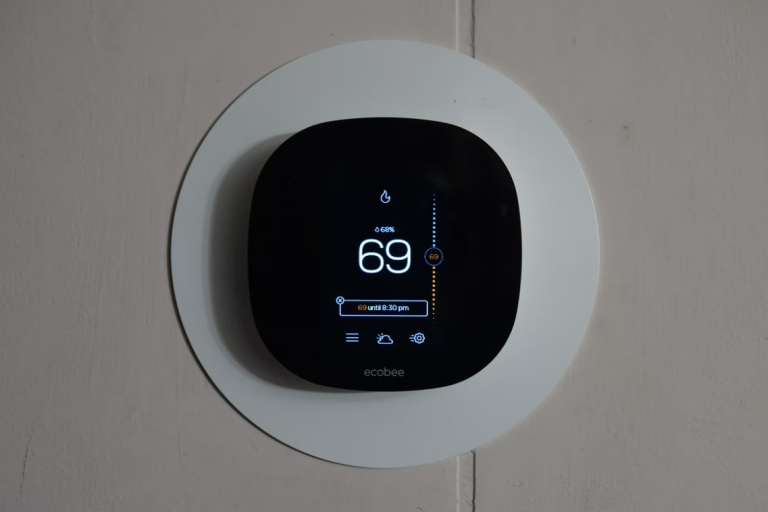Obviously, you want your home to be at a comfortable temperature all year long. However, sometimes, the temperature of your home doesn’t match the number on the thermostat, no matter what you do. When it comes to figuring out why your HVAC system is not matching the temperature you have set on your thermostat, there are a host of possible issues you can check. It helps to start with the easiest and most obvious culprits, but it is also helpful to understand some of the other complications that can contribute to undesired effects of your unit seeming to have no clue what the temperature setting is.
Fix Your Thermostat
Thermostats have gone from being very basic to very sophisticated. Programmable thermostats can be set to automatically adjust throughout the day for both comfort and efficiency. There are also units that can be programmed and adjusted from anywhere as long as you have access to the internet.
Symptoms of a faulty thermostat may include the undesired air temperature blowing from the vents or no air blowing at all. You might also see a higher or lower than expected temperature reading on the thermostat. Check the obvious first. Is it set to heat when you want it to be cooling the indoor environment? Make sure the setting is for auto so it will automatically adjust as temperatures change. Next, check the fan setting to be sure it is set to “auto” rather than constantly being “on.”
Perhaps someone else in the household has changed your settings. If your unit is programmable, go through the settings to ensure they match your desired times and temperatures for when people are home, away or asleep. Other than these, you can check the batteries. If after all this a problem persists, you may want to have the wiring checked by a professional.
Check and Change the Filter
It is too easy to rely on the HVAC system to perform without even thinking about it. However, it is crucial that one of your chores throughout the year is to make sure to replace dirty filters regularly. In addition to the outdoor unit, you have an indoor air handler. This part of the system houses the air filter that is designed to trap dust, dirt, and airborne particles so that you can maintain the best indoor air quality.
Clogged filters block the airflow, which can lead to inefficient performance. Dirty filters also tax the system and can cause it to overheat, and in extreme cases can cause the unit to short cycle or completely shut off. With regular filter changes, you do not have to worry about this issue.
However, how often you need to change the filter will depend on several different things, including how many people and animals are in your house and if anyone has respiratory issues. If you live alone and don’t have any pets, you should only have to change the filters twice a year; once as summer gets underway and you turn on your AC and then again when winter shows up and you start using your furnace. If you have more people at home but no furry pets, you should change the filters every three months. If you have one pet, you’ll need to change the filter about every two months, and if you have multiple pets, you’ll want to change it every month or so to maintain a high air quality in your home.
Look for a Frozen Evaporator Coil
A common issue that causes issues is a frozen evaporator coil. Signs of a frozen evaporator coil could be utility bills that are going up, the uncomfortable indoor air, excessive condensate draining where your unit is located, the appearance of frost on the copper lines, or frost appearing anywhere on the unit. Issues that lead to this condition can include dirty coils, clogged filters, or low refrigerant levels.
The appearance of frost means stop and fix. Do not continue to operate the unit until you have solved the problems. Since the coils are not always easy to access, and since handling refrigerant must be done by a licensed professional, it is wise not to try to troubleshoot these issues on your own.
Get Air Conditioning Repair
If thermostat settings are correct and you know you have clean filters, it could be time to consult the pros for an air conditioning repair assessment. Some issues that must be seen by a licensed professional involve the refrigerant, since it is a highly toxic chemical that has strict guidelines to follow, and the electrical panel and wiring.
If the AC runs on electricity but fails to run at all, it may have tripped the breaker. You can reset this once, wait at least half an hour and try running the unit again. However, if the unit continually trips the breaker, there are bigger issues. The outdoor AC unit will have a dedicated 220- or 240-volt breaker located near the unit. There is also a breaker located in the home’s panel.
Your home must also have sufficient wiring to handle the power that is being delivered to the unit. If the breakers are consistently getting triggered, this is a sure sign that something is amiss, and the breaker is taking the safe road of shutting off the unit. This is when you must consult the pros and have them evaluate whether you need air conditioning repair or if it is something else. Ultimately, you want to avoid the risk of overheated wiring causing a fire.
Knowing the signs of HVAC system issues can help you determine if the problem you’re facing is something you can easily handle by yourself or if it is something better left to a technician. If you cannot resolve poor HVAC performance issues from the simple steps, you are better served to obtain the specialized expertise from the experts rather than inflict damage that could result in much costlier repairs. A HVAC professional can take a look at your system and make the necessary repairs to make your home a comfortable place for your family again.


















